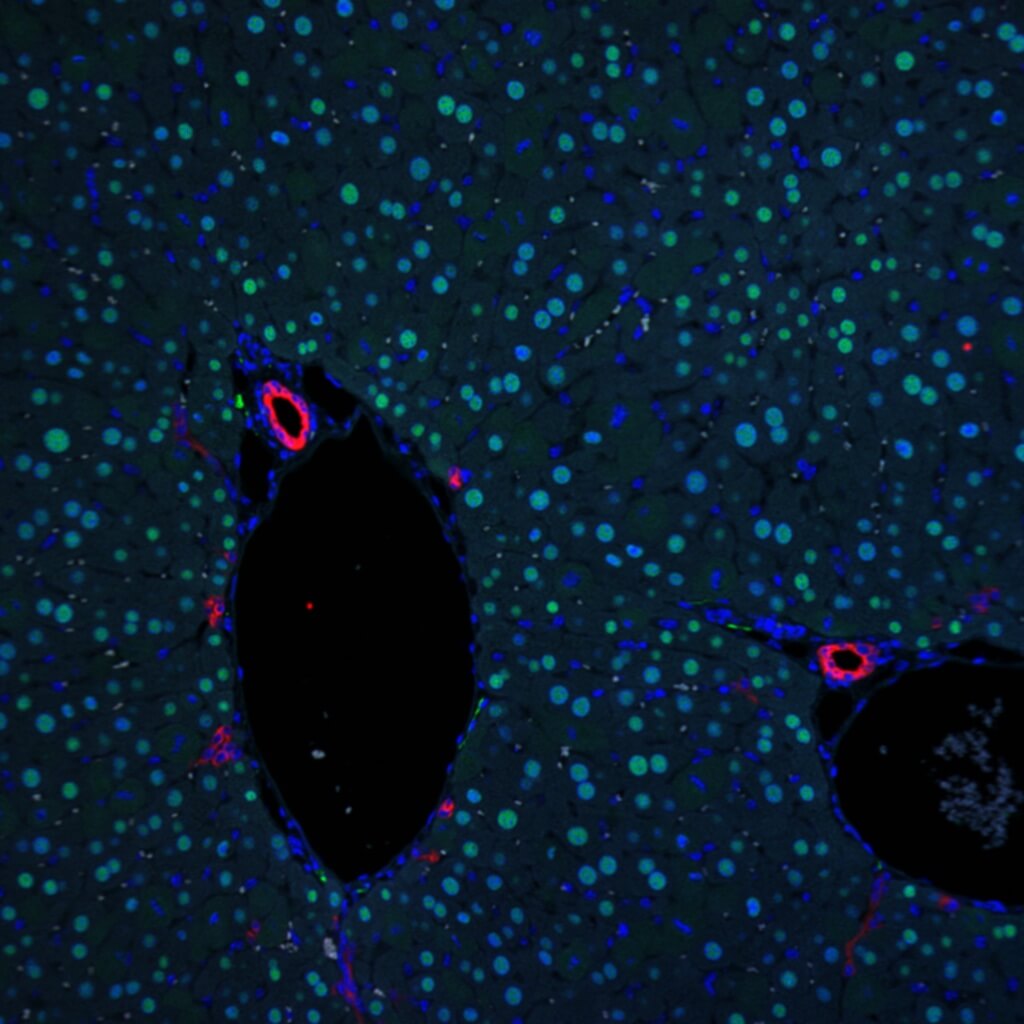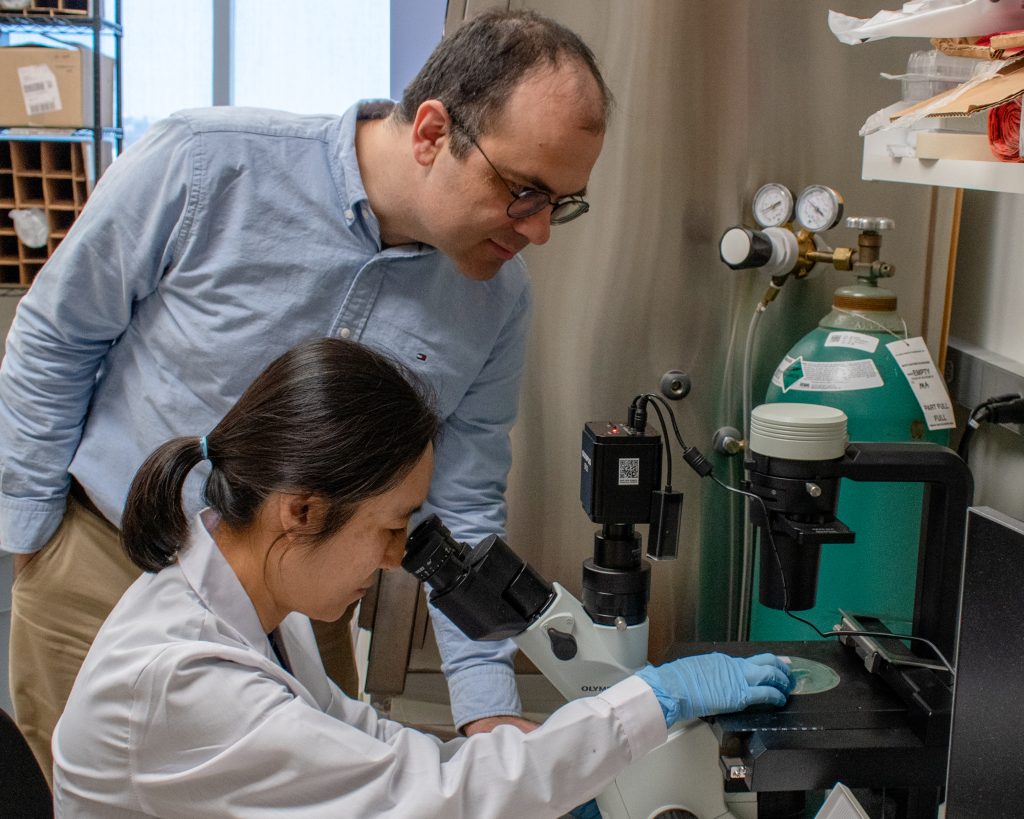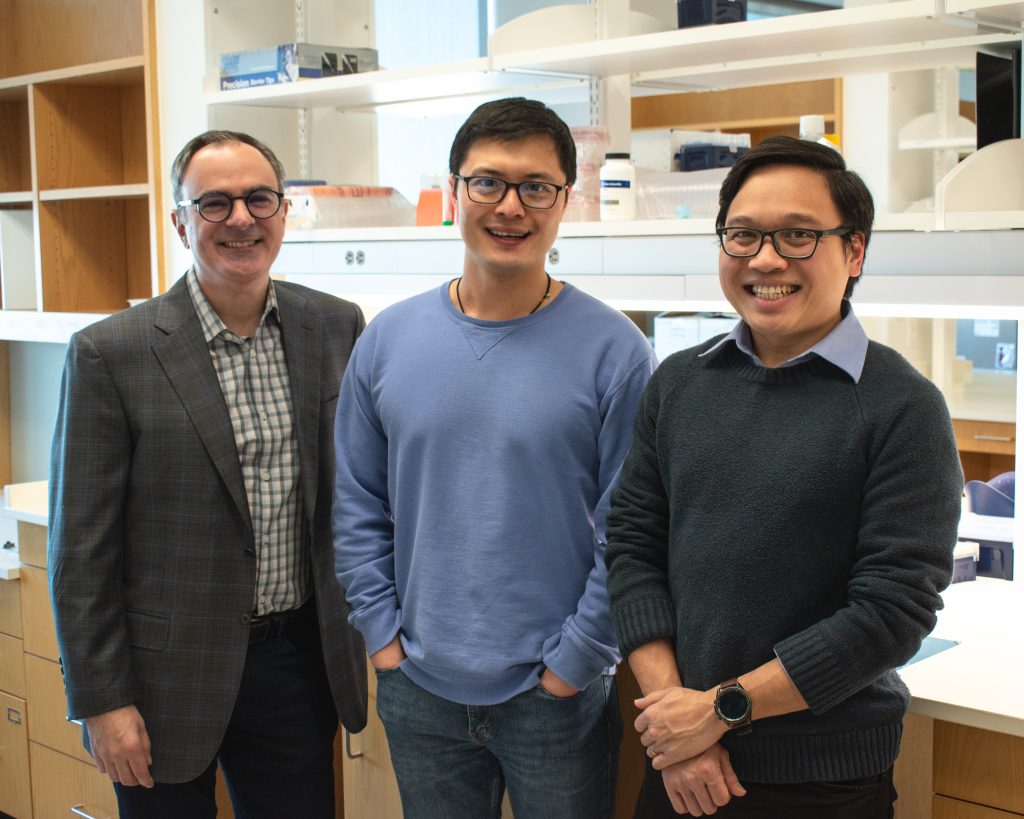Within our cells, mitochondria are responsible for converting food into energy. This works by taking electrons from the nutrients we eat and passing them through a series of five protein complexes in a sequential manner via an energy-producing process known as the electron transport chain (ETC). Traditionally, scientists have believed electrons enter the ETC through a large assembly of proteins in the mitochondria called complex I.
The Mishra lab is challenging this long-standing assumption with a new study published recently in eLife. In the paper, researchers found cells in the liver do not use complex I to make energy, showing for the first time that this complex may not be the universal way all mitochondria power cells. A deeper understanding of the key routes through which mitochondria accept electrons in specific organs is a vital first step in developing dietary-based therapies to treat metabolic diseases and improve mitochondria function.
While the role of complex I in electron transfer is well-established in laboratory-grown cells and in some organs, like the brain, very few detailed studies have been done in living animals before. Researchers in the Mishra lab addressed this gap in knowledge by deleting a key protein from complex I in the liver of mice and observing how its absence affected energy production. Surprisingly, they found the animals did not develop any detectable symptoms and maintained healthy liver function. Additionally, the mice did not compensate by making energy through an alternative pathway to the ETC. This suggests that the mouse liver does not normally use complex I to produce energy and that electrons entering the mitochondria in the liver do so through another primary gateway.
“Our findings suggest biologists should reconsider the mechanism that mitochondria use to power cells in animals. Complex I is clearly important in lab-grown cells, but other proteins may be critical entry points in living organisms. In the future, we would like to understand how the ETC is really powered in mice and humans; this would help us understand the causes and consequences of metabolic and mitochondrial diseases,” said Prashant Mishra, M.D., Ph.D., an Assistant Professor at Children’s Medical Center Research Institute at UT Southwestern and lead author of the study.




